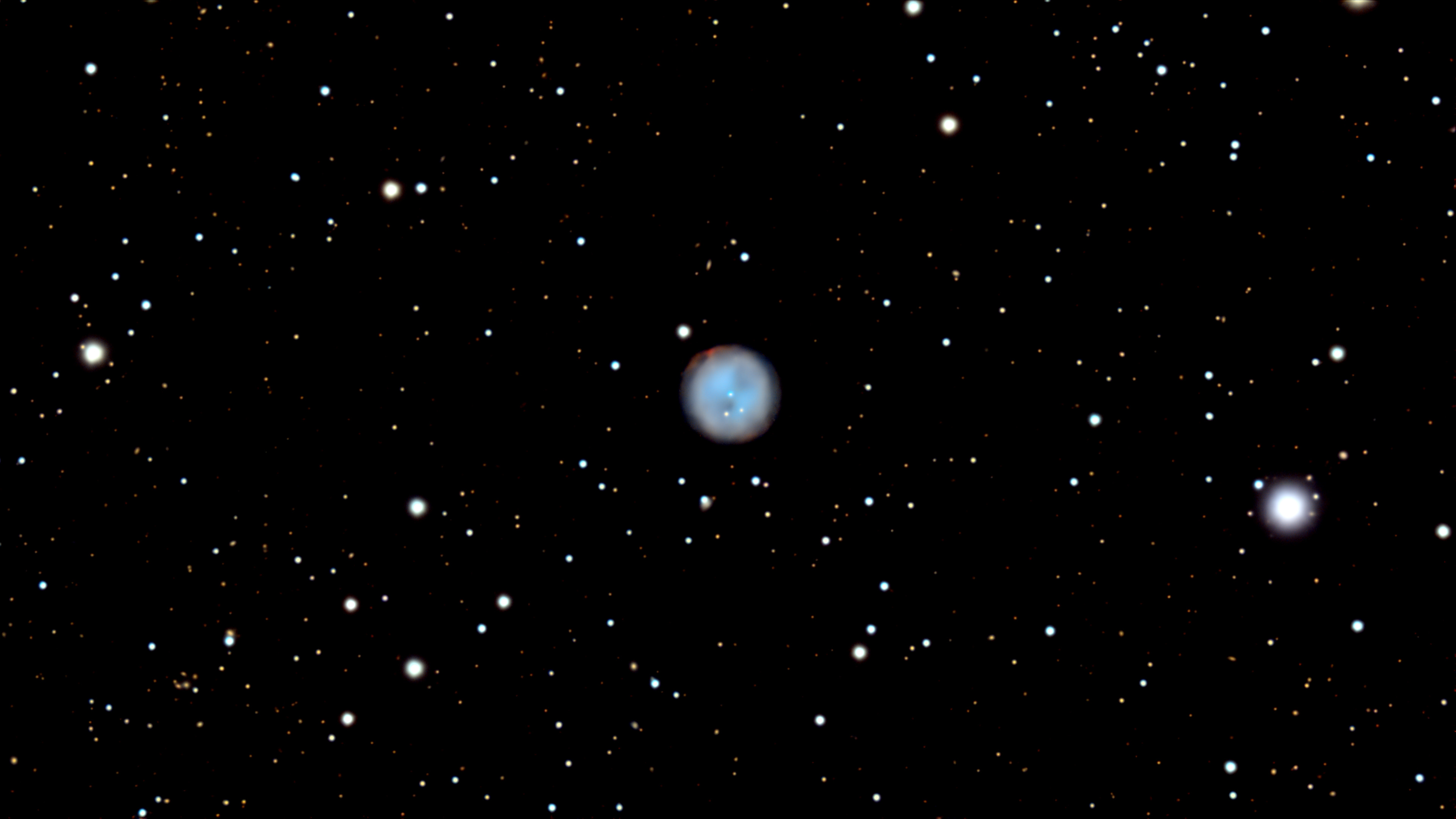I just published the exact same target at even longer FL with the same camera :
https://app.astrobin.com/search?i=3lnbznStars are nice and tight, and while BlurXTerminator does help, they were already quite small in the unedited subs. While my experience with it is somewhat limited, I don't think the camera itself is responsible for the bloat, rather the small pixel size is less forgiving of potential sources of bloat. Meaning you need to check :
- Filters. A narrow multiband filter when appropriate, and if shooting broadband do not neglect a UV/IR filter that is *not* builtin to the ASI585MC Pro.
- Focus. Either a bahtinov mask, an autofocuser, or if you must do it manually crank up gamma and use fast exposures in FireCapture to get it right.
- Guiding. I got consistently sub 1" guiding during my subs. At such an image scale less consistent guiding will noticeably smear your stars. Though your bloat is very symmetric, so this may not be your issue here.
- Capture settings. Make sure your gain and exposure settings aren't inflating your stars by over saturating them. This can change drastically depending on the exact filter you're using. The smaller pixels should actually help with this, but the modest full well size of the camera does the opposite.
While I can't confirm which if any is your issue, at the very least I can guarantee that it's possible to get much tighter rounder stars using this camera.
Finally, while it's often considered best practice to place the filter before the corrector *or* add a mm to your back focus, in general it's not practical and the effect is negligible. The reason you'll often hear this recommendation is because a filter pushes back the focal plane by 1mm, so your back focus needs to adapt. Usually though most adapters are such that a backfocus of 55mm is achieved, so a filter isn't taken into account. You could add a tiny 1mm spacer, but in practice, I frankly don't think 1mm will make a difference. In fact an important reason to put your filter after your corrector is if your corrector is also a reducer, in which case you want your OAG to come after the corrector to get a wider FOV to find guide stars, but you definitely want your filter *after* your OAG to not pointlessly lose light for your guider. In short : really don't worry about that, and put your filter wherever is more practical, and never before an OAG, especially if it's a narrowband filter.
Clear skies

